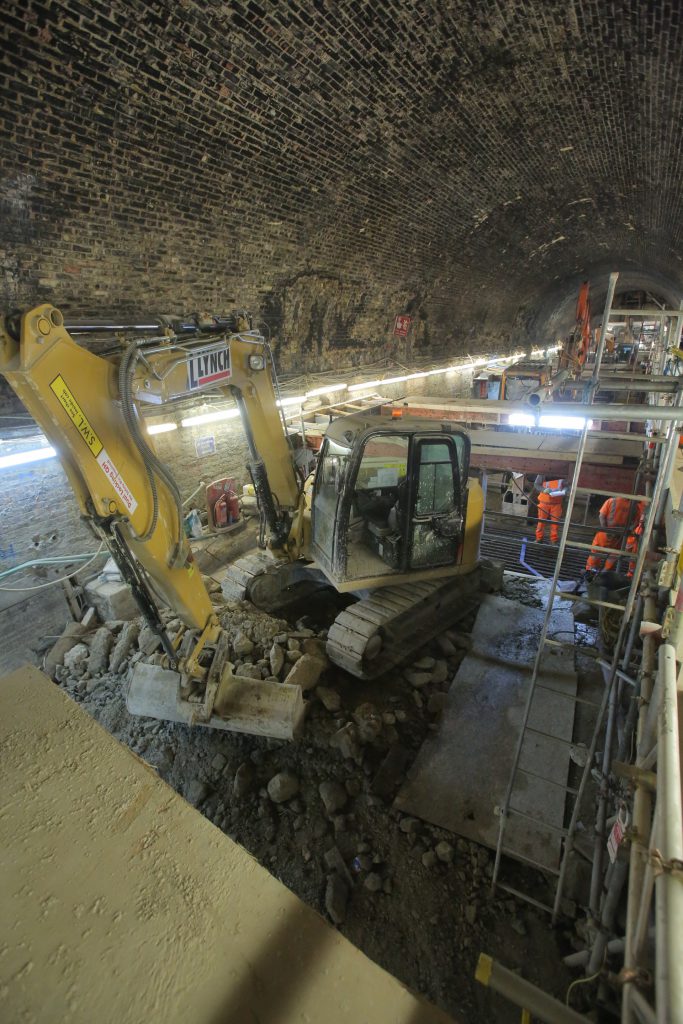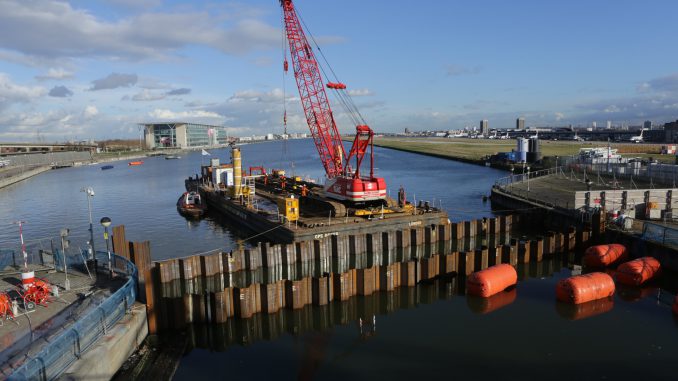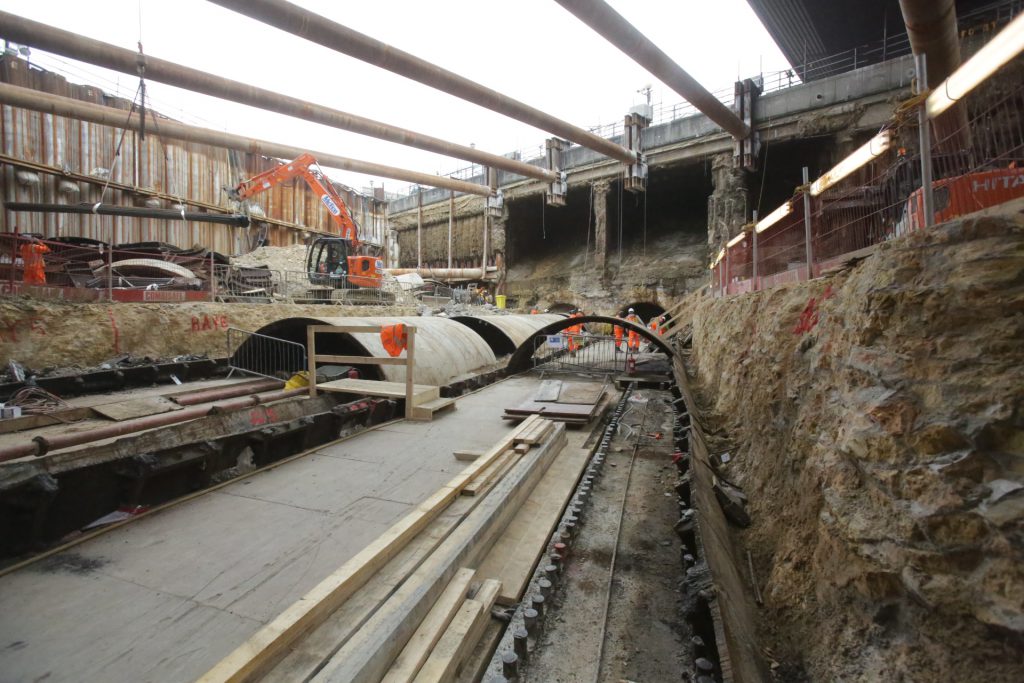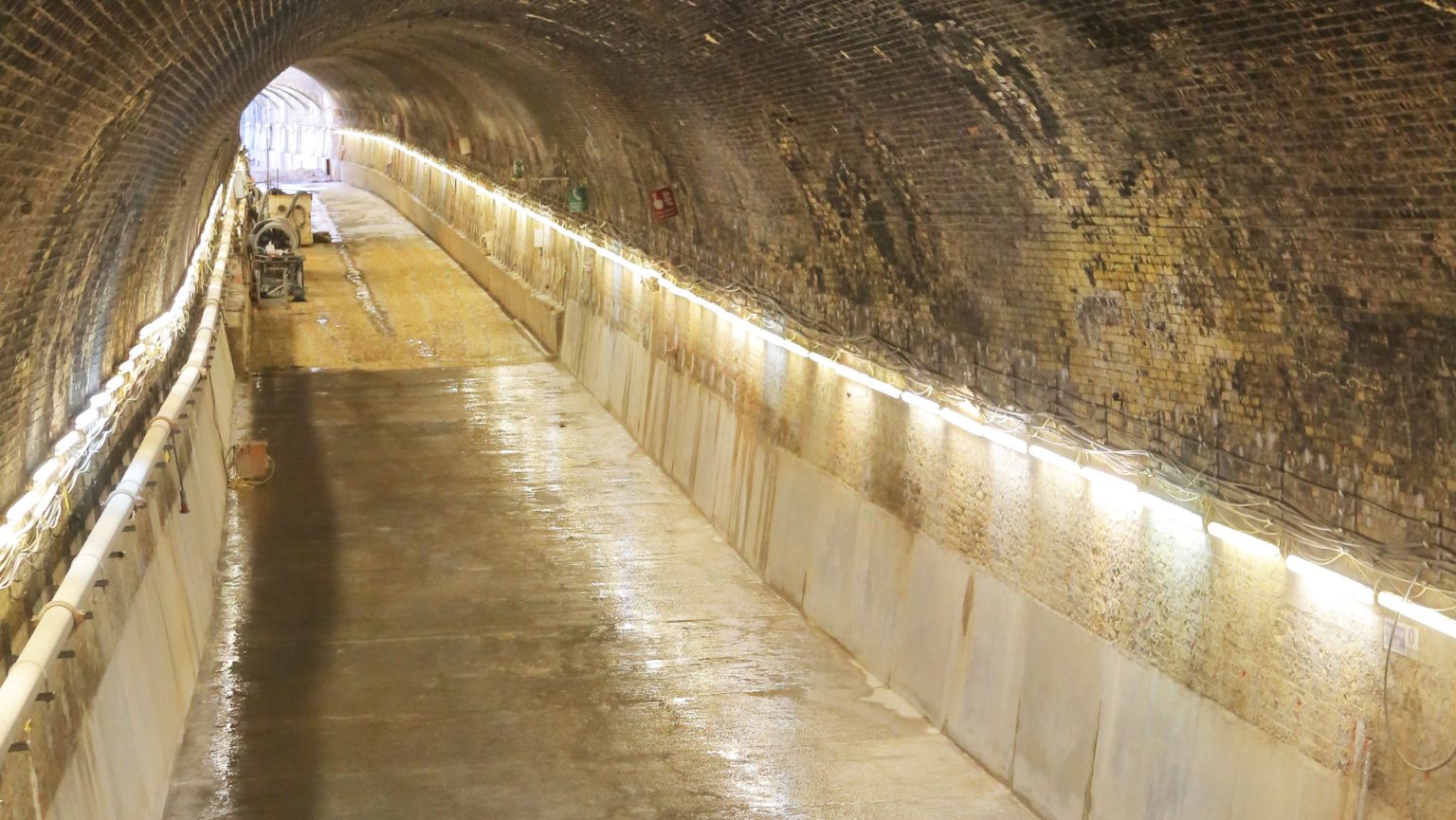Connaught Tunnel and Surface Railway gets CEEQUAL rating of Excellent
Overview

The Connaught Tunnel was considered to be one of Crossrail’s highest risk sites from an environmental perspective given its direct interface with the London Docks. The training and protection measures put in place ensured no major pollution incidents took place over the length of the project. The continuous protection measures put in place over the length of the project helped the project team to secure an ‘Excellent’ CEEQUAL rating in this category.
About
Crossrail is a railway construction project centred around London. Its aim is to provide rapid transport across the capital by connecting two major railway lines terminating in London.
Background
The Connaught Tunnel Refurbishment Project transformed an abandoned 1878 Victorian tunnel and disused railway and re-engineered it to receive the Crossrail track and trains for the next 120 years.
The principal elements of the project comprised of:
Refurbishment and modification to the existing Connaught Tunnel and approach ramps, including converting the twin binocular tunnels into one large-bore tunnel, requiring the central section to be removed and rebuilt by ‘cut and cover’ method enabled by two cofferdams in the dock allowing dewatering.
Construction of the surface rail between Custom House Station and North Woolwich portal.
Upgrading drainage systems.
Micro tunnelling / SCL works in pump house and vent shafts.
Demolition of buildings which included Grade Listed Buildings.
Marine Works / Diving Operations.

Challenges
The project was technically challenging and very unusual for a major new transport scheme such as Crossrail.

Solutions
During the initial stages of the Project, the Project Team were able to propose design changes, many of which brought a considerable environmental benefit in addition to cost savings. The following, amongst many others, were design changes proposed that brought about environmental benefits as well as cost savings:
Instrumentation and monitoring
The instrumentation and monitoring system was redesigned reducing the number of monitoring points. It used automated systems where possible. Saving: £1m.
Reduction in site visits by technical staff (transport)
Removing night works removed the need for task lighting (energy, night lights) and removed noise from working at night
Piling
The original proposed piling method from Crossrail was VCC Piling. This was changed to Controlled Modulus Column piling. Saving: £300,000.
Faster method which reduced deliveries/ visits to site
Less noise and vibration impacts
Reduced diameter of piles (450mm – 320mm) so reduction in materials and reduction in deliveries
Vehicle restraint wall
Vehicle restraint wall combined into track slab so a wall “toe” was no longer required. Saving: £250,000.
Reduction in materials including reinforcement and concrete
Reduction in deliveries (transport)
Reduced scope meant reduced temporary works so no additional excavations, trench sheets required (materials and plant use)
Removed requirement for remobilisation (equipment deliveries etc.)
Reuse of track ballast
Track ballast on site reused in load transfer platform. Saving: £100,000.
Reduction in material sent off site (transport)
Reduction in materials delivered (transport)
Reduction in waste sent off site
Increased proportion of on-site recycled material
Dewatering system
Change to dewatering scheme reduced the number of deep wells into chalk aquifer and the injectors were installed from the tunnel, rather than from the surface. Saving: £185,000.
Reduction in pathways for contamination
Less community disruption to surface from drilling
Less noise and vibration and air quality impacts on the surface as no drilling at that location
Silt removal changed to silt displacement
Reduction in equipment required: silt curtains, fish scarers, booms across dock and boats etc. Saving: £50,000.
Reduction in ecological impact and risk of impacting fish etc
Benefits
Water environment
The Connaught Tunnel was considered to be one of Crossrail’s highest risk sites from an environmental perspective given its direct interface with the London Docks. The continuous protection measures put in place over the length of the Project helped the Project Team to secure an ‘Excellent’ CEEQUAL rating in this category. The training and protection measures put in place ensured no major pollution incidents took place over the length of the Project. One key measure was spill training for operatives. Every operative who came onto the site was fully trained and briefed on how to operate the mechanisms within the tunnel which would divert the water flow from the London Docks into the sewer. Further to this, all the water flowing into the tunnel came through two attenuation tanks, both of which had oil spill absorbents within them, allowing operatives to mitigate this environmental risk.
People and communities
The Project Team also scored very highly in the People & Communities section. The Project made use of a community liaison representative who ran a number of initiatives over the Project. Initiatives included:
Frequent charitable donations to the local school, including both financial and resource support for any campaigns the school was running.
A book buddies initiative whereby staff would read to pupils.
Repainting the local community centre.
Donating surplus materials to help local volunteers building a community garden and sponsorship of local business.
The CEEQUAL assessment was a key factor in the project achieving its sustainability goals from beginning to end. The nature of CEEQUAL meant sustainability was considered and looked at through each stage of the project, from design, through to an interim assessment in the midst of construction, and to the final review at the end of the project.
CEEQUAL influenced the design in order to fulfil the goal of attaining a CEEQUAL ‘Excellent’ Award. When construction had come to an end, the contractor VINCI Construction UK, and client Crossrail, came together to look over the whole life of the project, collating and discussing sustainability achievements. This shows how CEEQUAL can bring different parts of the project team closer together as they come together to achieve a joint award.




